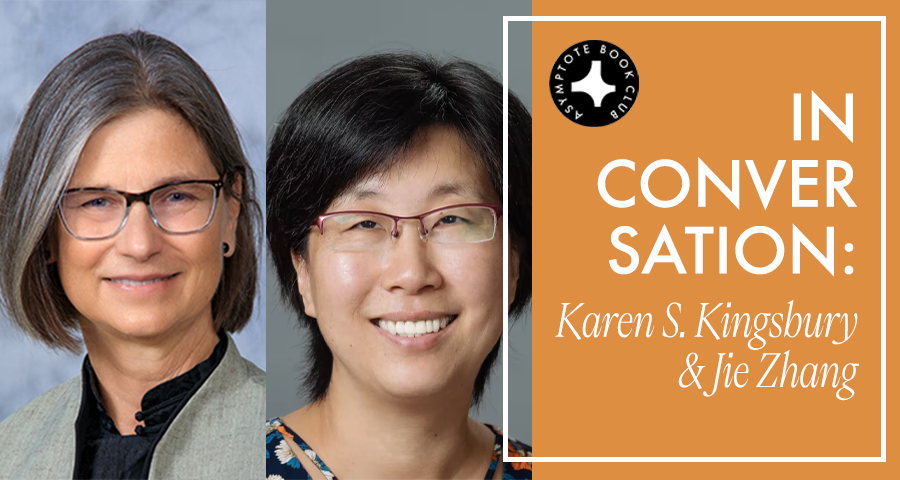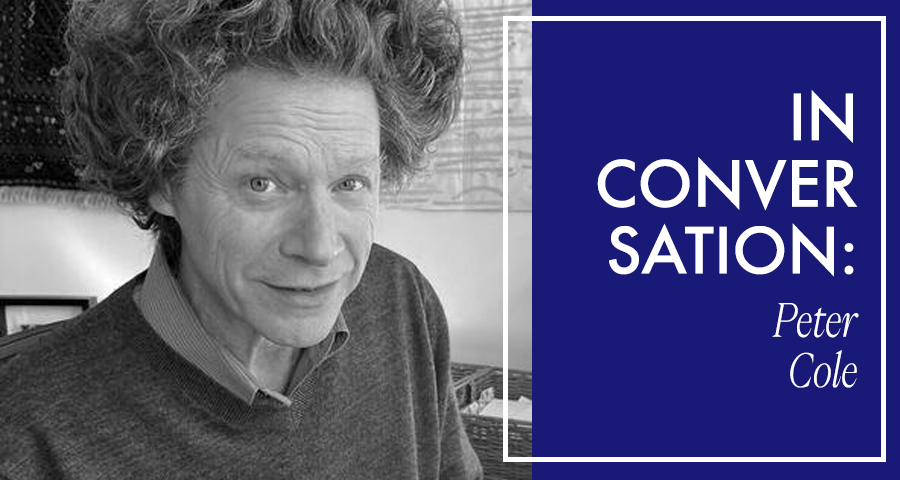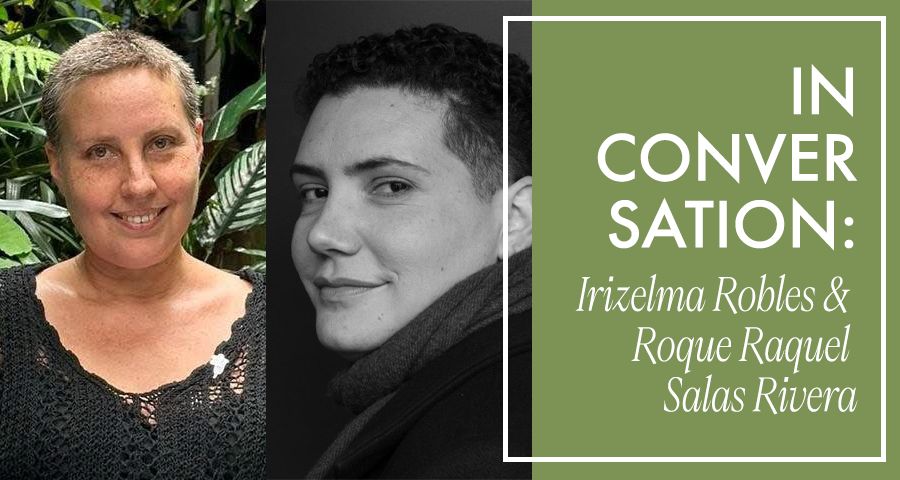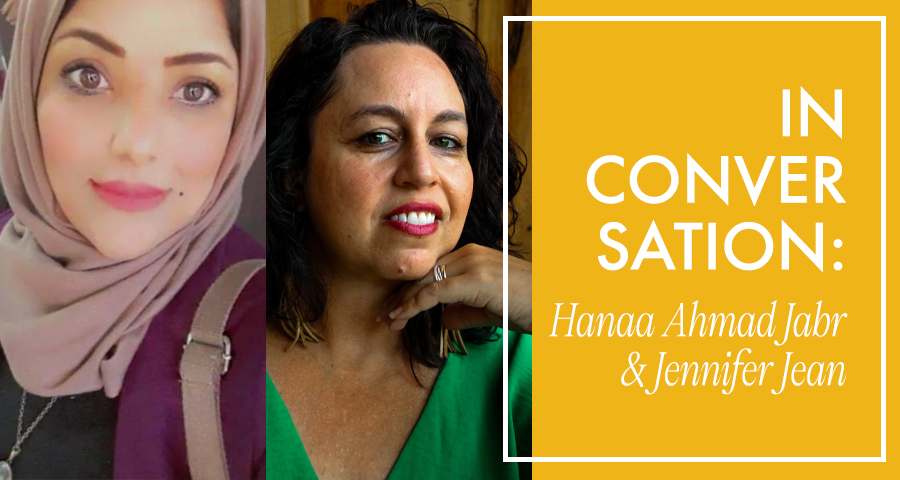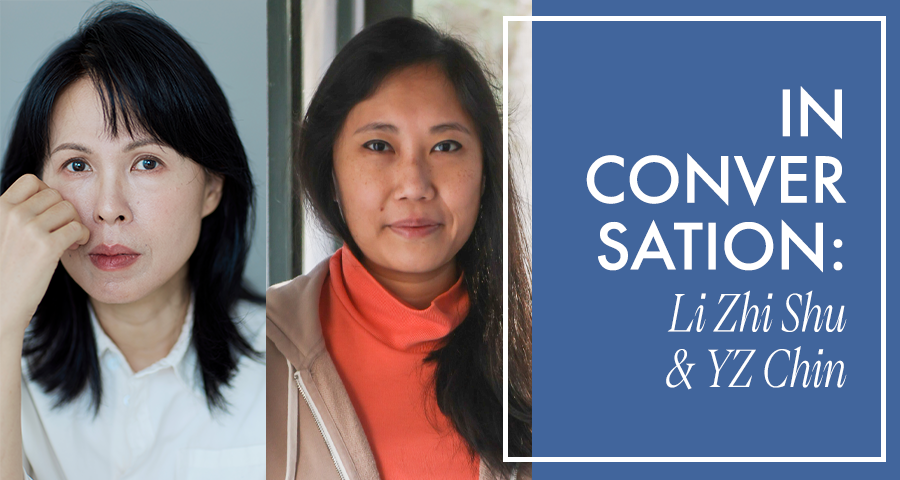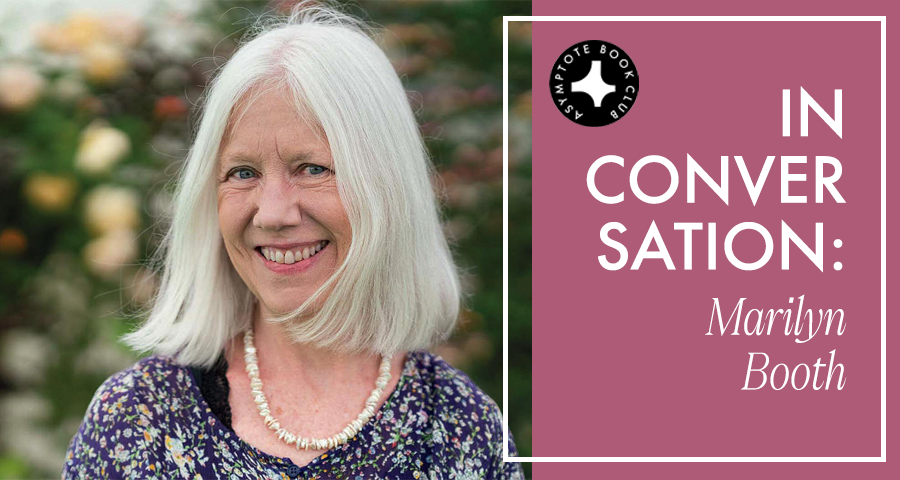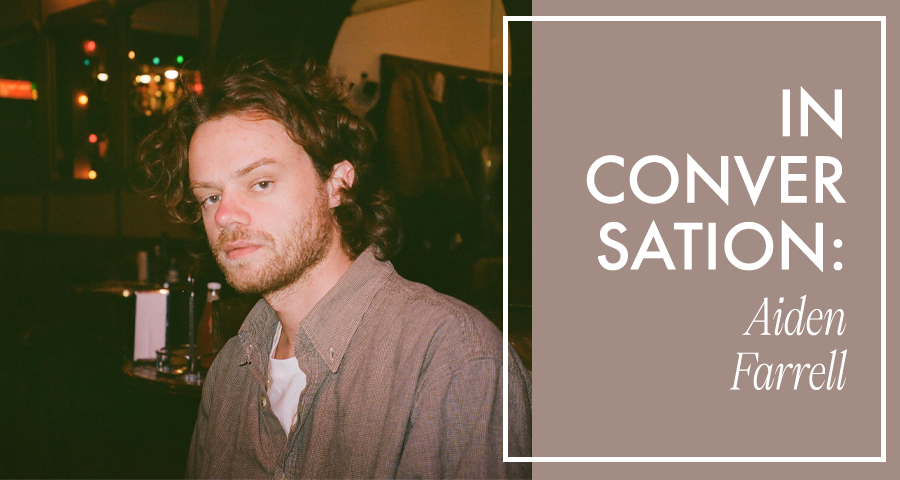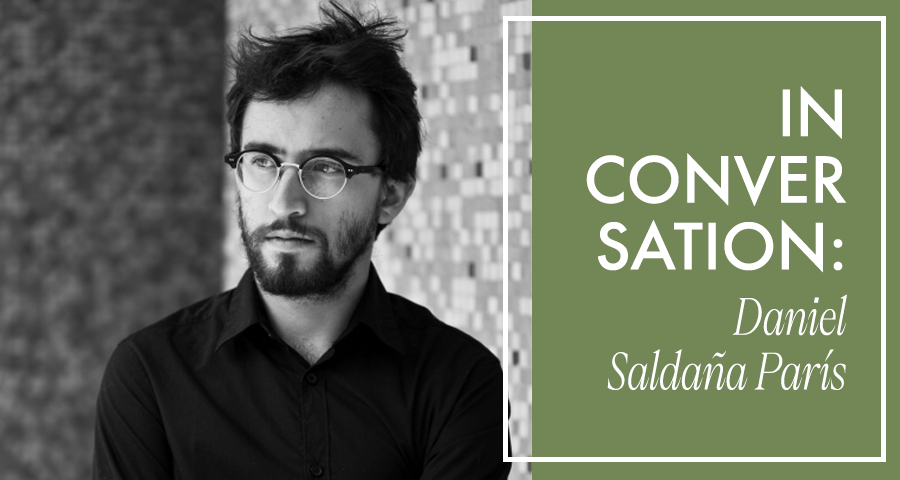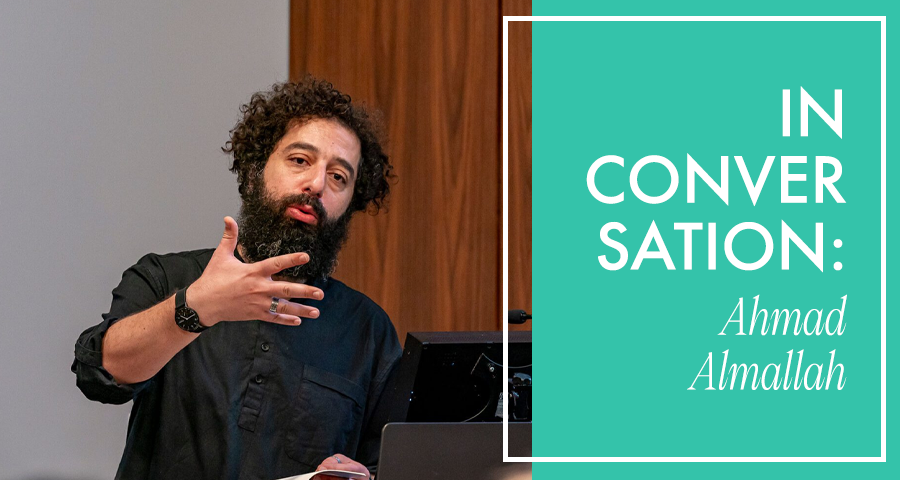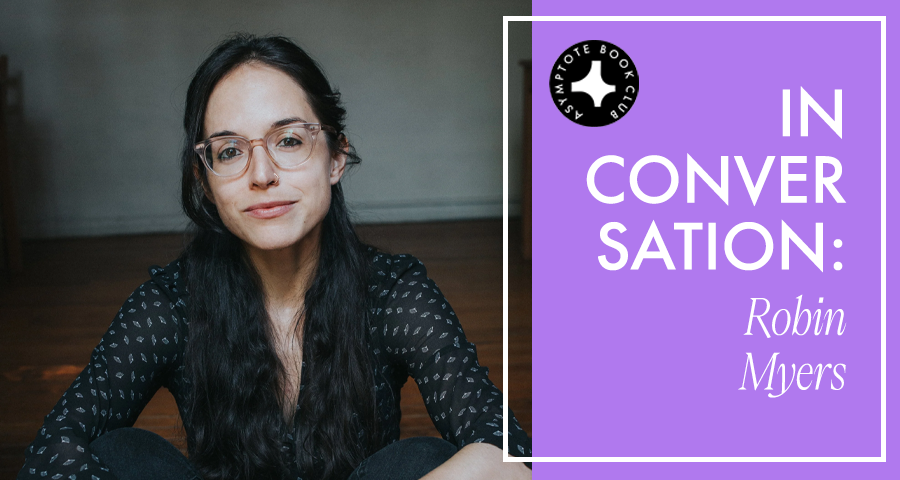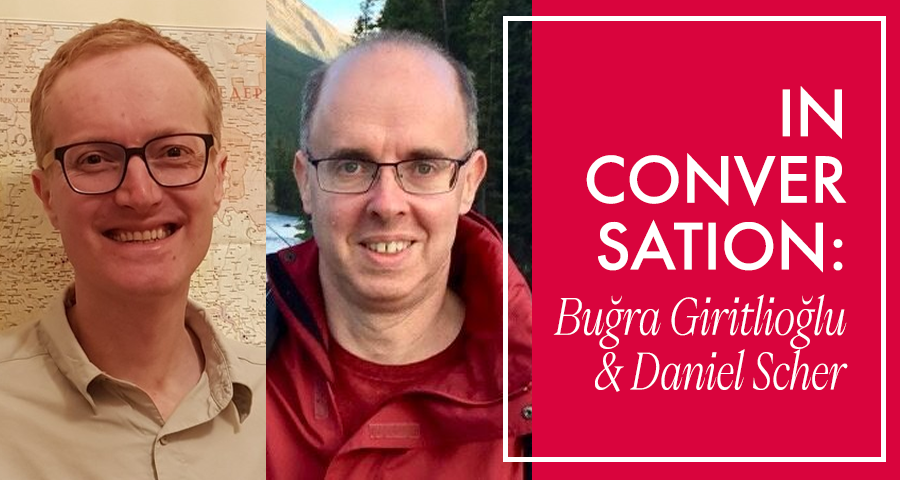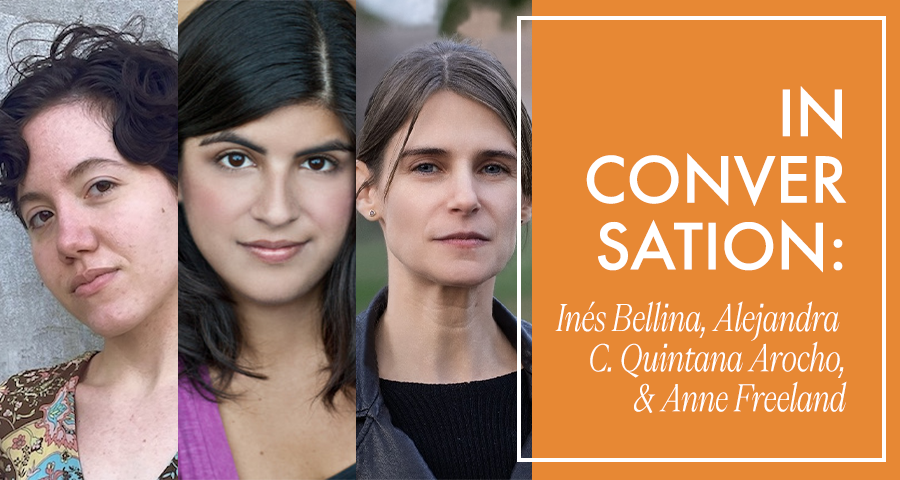Peter Cole, a MacArthur Fellow and a Professor in the Practice at Yale, is a poet and a translator from Hebrew and Arabic. His past translation projects include the Hebrew poetry of Muslim and Christian Spain, the poetry of Kabbalah, and the works of the Palestinian poet Taha Muhammad Ali. In October, New York Review Books brought out On the Slaughter, Cole’s translated selection of poems by Hayim Nahman Bialik (1873-1934), the Ukrainian-born Jew who became not only the pre-eminent Hebrew poet of his time, but also the major cultural figure of both the Jewish diaspora and the nascent Jewish community in Ottoman and British Mandate Palestine. Bialik is still regarded as something of the patron saint of modern Hebrew literature.
Recently, I paid Cole a visit in New Haven. Walking along the harbor, sitting over tea and dried apricots at his table, and, later, conversing over email, we discussed the mists surrounding the complex and contested figure of Bialik; October 7 and its genocidal aftermath in Gaza; how translation fits into the matrix of history, poetry, and ideology; and more.
Daniel Yadin (DY): I’d imagine that many of our readers are hearing about Bialik for the first time, though he’s an institution in the Jewish world. Bialik is the poet of modern Hebrew—at least, the granddad of the bunch. In your introduction to On the Slaughter, you talk about the ways in which you present a counter-reading of the poet. I agree you’re reading against the grain here. Would you say you’re also translating against the grain?
Peter Cole (PC): At the most basic level I’d say I was actually translating with the grain of the poetry—and certainly its granularity, since translation as I know and love it entails the slippery business of trying to give an honest, if fabricated, account of one’s readings and what Blake calls their minute particulars. That’s “fabricated” as in constructed or woven, a made thing.
DY: Almost tactile.
PC: Almost and then some. I’m trying to bring a compound of literary and historical alertness to my encounter with these poems. At the same time, I’m also translating against the grain of the received version of Bialik, who—as you note—was a titan of Hebrew poetry in a public way that may be hard for Americans to wrap their minds around. Some 100,000 people attended his 1934 funeral in Tel Aviv—which is to say, half of the Jewish population of British Mandatory Palestine.
DY: It’s interesting, translating a figure like that—you have to give an honest account of your own reading, but you also, on some level, have to account for the readings and misreadings that are not your own.
PC: The poetry wasn’t written by the iconic figure—the statue in the park that Bialik became even in his lifetime, or the face that appeared years later on Israeli postage stamps and street signs. It was composed for the most part by a deeply conflicted loner, a socially inclined introvert who came from a nowhere that was most definitely somewhere (in what’s now Ukraine), an orphan who threw his immense talents into a lifelong project of personal and communal reclamation and cultural reconfiguration. The distance between that shy, restless poet and the national hero he became is abysmal, and not easily crossed. But my experience of reading and translating Bialik did somehow sweep me back to a place far from the statue and its bird droppings, the ideological crud in which the poetry has long been encased. Getting to the poem and the poet behind the legend, and learning to hear his words for myself, was half the work and maybe much more than half—all before I began “translating.” The translation before the translation is how I think of it.
DY: You write that you were surprised it was Bialik whose voice came to you after October 7. What was surprising about that?
PC: For anyone paying close attention to the news from Israel/Palestine on and after October 7, 2023, it was hard not to hear Bialik’s voice, since it was trumpeted in twisted fashion by Benjamin Netanyahu and his followers as a part of a call to “avenge this black day.” The prime minister cranked up his rallying cry by citing two lines from “On the Slaughter,” the short poem Bialik wrote about the Kishinev pogrom immediately after news of it reached him in Odessa in April 1903. As the clumsy English-language tweet from Bibi’s office had it: “The vengeance for a small child’s blood / Satan himself never dreamed.” Of course the prime-ministerial blast left out the key line before the two that were quoted, along with the thrust of the entire poem: “And cursed be he who cries—Revenge!”
DY: Convenient omission.
PC: And that was just the start: newspapers and magazines in the US and Israel—from the New York Times to the New Yorker, from Haaretz to an IDF literary journal—cited those lines from “On the Slaughter,” as well as others from Bialik’s much longer “City of Slaughter,” which details in near-documentary fashion the pogrom and its horrors.
DY: So Bialik’s voice was coming to you, whether you liked it or not.
PC: Yes. But what surprised me is what came just after that. As the mass murder of Jews gave way to what much of the world began to acknowledge as the genocide of Palestinians, I found myself drawn magnetically to Bialik’s poems to find out for myself what in fact they were or might be saying, then and now. I’d translated a few of his poems over the years, and that experience was memorable and left its mark—but I never felt called to bring a larger selection of his work into English. He was too central to the mainstream Zionist narrative, which, frankly, wasn’t what interested me. So what surprised when I went back to the poems in this new context was that I met not the reductive poet of vengeance that the contemporary Israeli imagination has turned Bialik into, but a poet who was much freer, darker, and more paradoxical—someone far more complex and fascinating than his reputation as the “national poet” of the Jewish people implied. In this he’s a bit like Robert Frost, who suffered for years in America from a reputation as the “good gray poet,” when in fact he was anything but.
DY: Earlier you were talking about “the translation before the translation.” It seems as if you’re also trying to ward off “the reading before the reading” that much of the world was doing, or still does.
PC: Exactly. The problem was that a reputation inflected by a century-old ideology was getting in the way of hearing the poetry. Once I cleared a path back to Bialik’s poems themselves and felt that I was inside them, I found myself encountering all sorts of anxiety and ambivalence in his work, about Zion at the end of the nineteenth century and the beginning of the twentieth, and about the Jewish community beyond it. Things that seemed to be, as John Dryden discovered while translating Ovid and other Latin poets, “secretly in the poet.” Or somehow between the lines or there in the cloud-like “condensation of the shadowy intellect” that von Humboldt says words are. I also sensed in Bialik an ardor and even desperation and vulnerability that hadn’t really registered on me before. Here was the great poet of Zion who in 1903, immediately after Kishinev, had declined a colleague’s offer of a good job in Palestine, saying: “You should know that my soul is rooted in the diaspora.”
DY: That’s striking to hear from someone they ended up naming a town after in Israel—where the Zionist project is understood to include “the negation of the diaspora.”
PC: It is. The process of recovery in translation often involves a jarring reframing of a body of work. That’s part of the “dis-ease” that translation involves—to take up another one of Dryden’s marvelous formulations. What I was gradually discovering in that whole process of counter-reading and reframing was the writer I’d first met in essays like “Revealment and Concealment in Language” and, maybe above all, “Jewish Dualism”—Ha’shniyut b’yisrael, a term that might better be rendered as Jewish polarity, or doubling. In that essay Bialik describes how Jewish civilization itself has survived by virtue of an alternating current between poles of elemental dimensions of experience: dispersion and homeland, abstraction and concretion, sacred and profane, particular and universal, imaginative interpretation and law, and more. These ostensibly opposed aspects are, as Bialik tells it, bound together in a precarious tension and capacious alliance. They ask us to hold several things in mind at once, under the pressure of poetry, and to experience their complex splendor and terror and truth alike.
In the wake of the gruesomeness of October 7 and its bloody aftermath in Gaza, I couldn’t stop reading Bialik and writing through him, as it were. Or maybe he was writing through me. In any case, it was as though he held some secret understanding to it all—one that made urgent sense in the wake of the monstrous mirrorings and moral collapse that was playing itself out in real time around me and millions of others, and also within.
DY: “City of Slaughter” is a great example of a poem that acts as a pressure chamber, forcing the various elemental dimensions of life into a singular encounter with language. But that process works, I think, only if it’s bound up in some kind of convincing aesthetic experience. You’ve mentioned to me that your version of that poem turned out to be almost unrecognizable to some people who had only read older translations of it. What did you do to get through the bird droppings on the statue?
PC: The simple answer is that I listened to the poem. Of course that’s one of those simple things that isn’t so simple. Gradually that listening broke through the crud and took me past the statue itself back to the words in a row that the poem is—“a series of sounds in the air,” as the poet Basil Bunting put it. Though the air was different now—not 1903, but 2023, and that different atmosphere was bringing about changes in the way I heard the poem. It’s as though history itself were acting as a kind of re-agent. A re-agent in chemistry is a material, a chemical compound, that causes a kind of reaction that can, for instance, make it useful as a forensic tool. Certain re-agents can be applied to old manuscripts to bring out the faded writing on them, for instance. It’s as if the slaughter of October 7 and the war that followed were heightening the latent anxiety in the poetry, its underbelly, and doubts. In a haunting return of the repressed, or oppressed, suddenly—disturbingly—Gaza was Kishinev.
DY: It’d be hard to read “City of Slaughter” today—which Bialik wrote after being sent to the site of the pogrom on a fact-finding mission—and not think of Gaza. His testimony turned out to be a prophecy.
PC: Well, it would be hard for you to read it and not think of Gaza. I’m afraid there are plenty of people today who would understand it as referring only to the eternal plight of the Jews—witness the response of most Israelis to what’s been going on. As I read the poem again and again, in the context of the poet’s larger body of work and the events playing out in Israel/Palestine, several aspects of the Hebrew attached themselves to me. For one, the elemental quality of the poem’s diction and rhythm, its strange combination of horror and beauty, anger and sympathy, and, always, the intensity of those combinations, or doublings. What I wanted to bring over into the English, and what mattered most to me about the poem, was that alloyed elemental feel of the verse—how that made it impossible to turn away from the difficult particulars of the poetry and brought about a kind of sympathy that was palpable, a feeling-with that overflowed the borders of the poem’s particularity and translated itself into something less tribal and more universal. And that sympathy holds through all of the many changes in the poem, whether the poet-prophet protagonist is taking in the details of the rapes and butchery or the stunning spring opening out all around him:
Get up and go to the city of slaughter and come to the yards
and see with your own eyes and run your hands along the fences
and trees and stones, and across the walls’ plaster, and touch
the dried blood and stiffened tissue spilled from skulls of the fallen.
. . .
With ten thousand golden arrows, the sun pierces your liver
as, from each splinter of glass, seven rays glimmer with glee in your doom—
for the Lord has called to the spring and the slaughter as one:
the sun rose, the acacia blossomed, and the slaughterer slaughtered.
In short, I did all that I could to hew to that elementalism, rhythmically and texturally here in the English: the concrete monosyllables, the falling rhythms interlaced at the end of the lines, the soft-pedaled embedding of the conspicuous biblical echoes (from the Abraham story and Jonah and Ezekiel), and more.
DY: There’s a huge variety of poems in this pretty slim collection. That’s a testament not only to Bialik’s range but to yours, too, as a translator. We have the Lord calling to the spring and the slaughter as one. We also have a marvelous collection of nursery rhymes.
PC: Bialik wrote what might be called “speculative nursery rhymes,” since Jewish childhood—certainly as he himself was growing up—was conducted in the vernacular, which in his case was Yiddish. These poems for children were envisioned as something for the future—maybe the very near future, in Ottoman and then British Mandatory Palestine, but he was writing for a childhood that didn’t yet exist.
“See-Saw” is perhaps the most famous of these poems for children, and, with the lightest of touches, it miraculously embodies one of the quintessential Bialikian polarities—the co-existence and tension in consciousness of what’s above and what’s below.
See, saw, see, saw,
down and up, up and down!
What is up?
What is down?
Only I,
you and I—
both of us balanced
on the scales
there between
the earth and sky.
It was important to me to keep that more “naïve” aspect of Bialik in view or hearing range, to present it as part of the bundle (of sensations, nerves, desires) that he is. It can be argued that this short poem of seeming innocence is a precis of his entire body of work. It’s still sung to this day by parents to their small children on playgrounds.
DY: Let’s go to the title poem, “On the Slaughter,” for a moment. You wrote about this poem for the Paris Review in 2014, during the war in Gaza that summer, and again for the Yale Review after October 7. You told me recently that the translation was not entirely done when you first published it over a decade ago. “It wasn’t yet embodied,” you said. “I wasn’t yet completely inside it.” Can you describe how you knew when it was embodied and you were inside it?
PC: That’s easier to know than explain. In the earlier draft from 2014, I felt that I had a foot in the door of the poem as a poem in English, but that I was still primarily translating only the ideas and the words—not the way they come together as a single musical, rhetorical, and architectural gesture. Or that parts of the translation felt right, but that I wasn’t quite getting the shape of the whole, the gradual and uncanny unfolding of the poem where every syllable and pause was playing a part in the evolving shape, and where the silences too were critical. Getting at all of that took more than I perhaps had on tap in 2014. But the historical and emotional shock of October 7 and what followed drove me further into the Hebrew poem and then, as it were, out the other side of it and back into English, and then through it as well. There are a couple of lines by the poet and dance critic Edwin Denby that are never far from me: “When he’s painted himself out of it / De Kooning says his picture’s finished.”
DY: Bialik’s project of kinus—the ingathering, editing, and publication of the history of Jewish literature—is important to you and your attraction to his work. I wonder how you feel, as a translator, engaged in a similar project.
PC: In my own and obviously much different way, I do feel that there are overlaps, not just for me as a translator, but also as poet. So, I’ve certainly been fueled by Bialik’s example at various stages. Pound said that the poet’s task is to build a world. And Charles Olson spoke of history as “a verb, to find out for yourself.” Of course you want to retrieve what you find. Maybe not all of it, but at least some of the best of it.
DY: You’ve included a beautiful frontispiece to this collection. In your translation work, and in your own poetry, you have a close relationship with the visual arts. Talk to me about this print.
PC: This print was part of a series composed to Bialik’s work by Moshe Gershuni, one of the great late twentieth- and twenty-first century Israeli artists and dissidents. Those prints became a kind of keyhole for me; they gave me a glimpse into what’s most vital in Bialik—the morphing, visceral swirl of it all, trees growing out of words and their letters, warped stars and question marks hung from them like earrings, a black so dark that it glows. Desire and disturbance of the deepest sort. That frontispiece is already a kind of translation, one that helped me hear and see and sense the poem as news.
DY: Looking at this book, as well as at your past projects—the Arabized Hebrew poetry of medieval Spain, the poetry of Kabbalah, and more—it’s clear you engage in some formidable scholarship as a matter of course in your translation work. You teach at Yale but you’re not, properly speaking, an academic, and you don’t have so much as a bachelor’s degree in any of this material. You might be the ultimate amateur—amateur in the original French sense, of someone who does something out of love. What is the role of love in translation?
PC: Well, I’m an autodidact in that respect, and obviously haven’t done it for the money! But that’s a beautiful question. The attachment and obsessive engagement of love, its erotics and anxiousness—which also includes hate and ambivalence—seems to me to be central to the broader project and labor of translation. When love falls out of the equation, when it’s no longer a driving force in the work, watch out. But that also probably holds for everything human beings do.
Daniel Yadin is a writer, reporter, translator, and bartender in New York City. He’s an associate poetry editor at Asymptote.
*****
Read more on the Asymptote blog:

